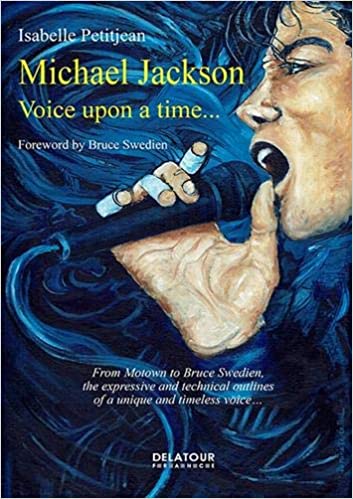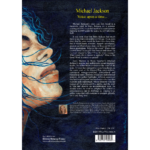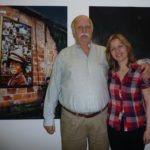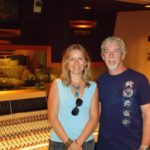(Delatour France – 2020)
Isabelle Petitjean is definitely very involved in the Jackson community and confirms it with her new book “Michael Jackson – Il était une voix”. After a first book published in 2015 and entitled “La culture pop au panthéon des Beaux-Arts, Dangerous, de Mark Ryden à Michael Jackson”, the author confirms the richness of the Jackson world by offering a book that is completely different from the previous one.
It is true that the subject of this voice, so unique, so particular and which fascinates so many people from all around the world, had to be treated by Isabelle, since she masters her subject so well. Although she is a classically trained musician, a music teacher, a university professor and a doctoral student in musicology at the Sorbonne, it is her status as an enthusiast of the King of Pop and his art that she claims to highlight her work.
As she puts it so well in the introduction of her latest work: “Michael Jackson’s voice is supposed to have given its first cry in a maternity ward in Indiana on a summer evening in 1958. It is supposed to have accompanied his last breath on a warm summer morning in 2009, under the bright Californian sky…”. These words, which may seem implacably logical, will find a broader and richer meaning in Isabelle Petitjean’s development of the subject. Indeed, throughout his life like any human being, it is through his voice that Michael Jackson made himself heard. Yes, it is indeed about humanizing him, that is why this book is not limited to the technique of machines in a recording studio. From Motown to adulthood, his vocal organ had matured with time and the author takes the time to deal with many aspects such as his pronunciation, his way of speaking and his evolution on the different albums of his discography by citing all the influences of the artist, like his vocal effects that appeared over time and that have become his trademark as a way for the general public to identify him from the very first notes.
Many people have followed his physical transformations to the point of focusing on this aspect, so we wouldn’t say no to approaching the sound of his voice, especially since Isabelle’s meeting with Seth Riggs, Michael Jackson’s singing teacher, allows us to learn more about his work method with the King of Pop.
His voicewas a gift so natural that it was necessary to shape it, and the work of a life is finally summarized and immortalized in these lines.
However, Seth Riggs is not the only collaborator that the author met in the making of this book. Indeed, the technical aspects (regarding the studios and machines) had to be addressed in order to complete and document it properly. I’m thinking in particular of Matt Forger, sound engineer from the Thriller album to the HIStory era, who gave Isabelle a tour of the Westlake studio.
Thanks to his kindness, I was able to discover some of his personal archives such as photos of the symphony orchestra playing on the song “Smile” but also some of his memories related to sessions at Westlake and at the Hit Factory. This rich and complex technique contrasts a lot with the humanity of the sensitive and particular voice, and it has rarely been approached so well so here is a tribute to Michael Jackson and Bruce Swedien in tandem as it should be. Seeing all the technical achievements in the service of an artist is truly one of the most touching themes of this book.
With the exception of Bruce Swedien’s book, “In The Studio with Michael Jackson”, here is the greatest testimony from “Svenk” (a nickname that Quincy Jones gave him) related to his collaboration with Michael Jackson and it would be a shame to miss it.
The evolution of Michael Jackson’s voice is above all the evolution of his life but also of his art, so the two are inseparable. To tackle this subject is an absolute and rich undertaking, and Isabelle knew how to carry out this task so I will quote her last lines to conclude this column in a beautiful way:
“Michael Jackson is a scout whose flame is his music. He carried it high, so that we can see it – from as far away as we live on the planet – and follow it. He didn’t tell us the path would be short and easy, but he told us not to give up, as he always fought. This legacy, which I believe is more spiritual than temporal, more mystical than artistic, goes beyond appearances and human means”.
https://www.isabellepetitjean.com/






